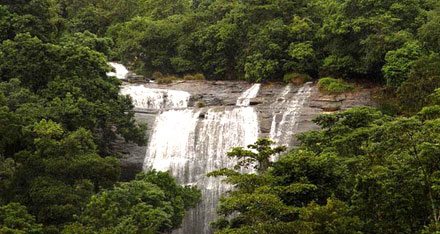Places to visit in Coorg
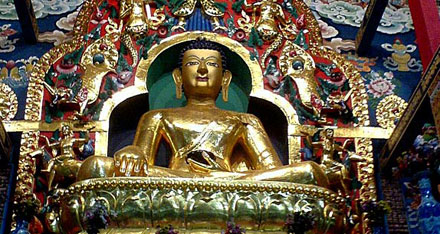
Tibetan Golden Temple
A recently built “Namdrolling Monastry”, a famous Tibetan Golden Temple, is a feast to the eyes in Bylukuppe. The Golden Temple adorned with a 60 ft Buddha statue and the recent addition of Zamdong Palri the copper coloured mountain is an exotic tourist attraction. Fascinating shopping marts selling ethnic Tibetan artefacts and modern fashion wares is a place to be visited. It is also the second largest Tibetan settlement in India.
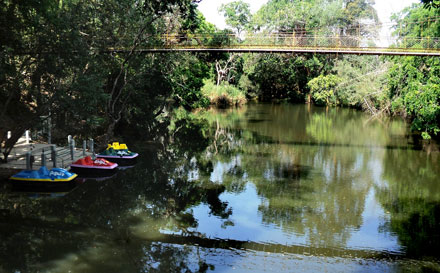
Cauvery Nisargadama
A beautiful, picturesque picnic spot, where the river Cauvery splits forming an island with a bamboo forest of 65 acres. There is a hanging bridge, Deer Park, Boating, Tree House, Elephant safari are worth going to. Ecofriendly cottages are available here. It is located in Kushalnagar and is at a distance of 27 kms from Madikeri.
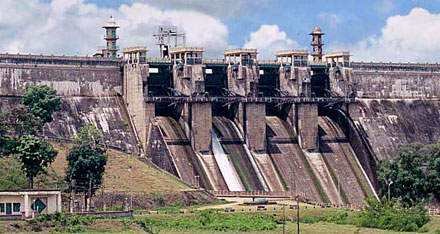
Harangi Dam- Kushalnagar
The only reservoir in Kodagu built across the tributary of Cauvery with a height of 47 mtrs and 846 mtrs wide. It is a real picnic spot where you can admire the gushing backwaters and natural beauty.
Dubare Elephant camp
It is a natural island with an elephant training camp on the banks of river Cauvery. People visitng the place enjoy the unusual experience of bathing, feeding and taming the elephants. Fishing and elephant safari is an wonderful experience here in Dubare. A journey of about 15 kms from Kushalnagar.
Bhagamandala
This is a shrine of Bhagandeshwara . The name is derived from Bhaganda Maharshi who installed a Shivalinga here. It is also the “Thriveni Sangama” of the sacred rivers of Coorg Cauvery, Kannike and Sujyothi, a sub-terrain stream. It has an important piligrimage centre called Bhagandeshwarea Kshethra, where piligrims take bath, offer oblations to their departed ancestors, then ascend the hills for a holy bath at Talacauvery.
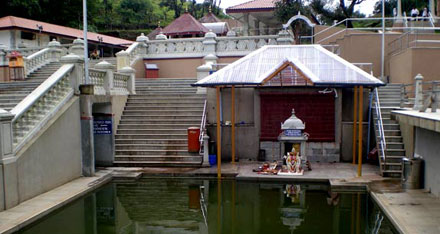
Talacauvery
The worshipping deity of Kodagu, River Cauvery takes her origin as a spring in Talacauvery situated on the slopes of Brahmagiri Hills. On the auspicious day of “Tula Sankramana” which generally falls in October 17th every year, the holy Cauvery appears by sudden upsurge of water in the Kundike – The Pond. It is an ideal place for a visit by any tourist for its natural beauty. Lakhs of people throng every year for a ‘holy dip’.
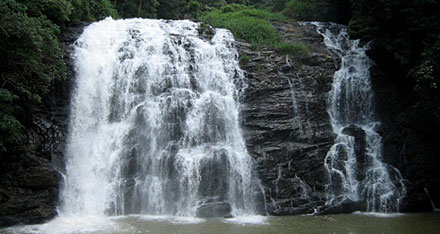
Abbey Falls - Madikeri
A 70ft waterfall, formerly named as Jessee Falls in honor of the daughter of first Chaplain of Mercara. An admiring beauty spot for picnic. Bathing and swimming in the deep waters is unsafe here.

Madikeri Palace & Fort
The fort crowning the town built in 1681, with an imposing structure built in European style. Inside is an English church in plain gothic style. The palace within the fort rebuilt by Tippu Sultan in 1790 and again Lingaraja during 1820. Two life size Elephant, made of mortar with majesty, catches one’s eye on entering. Presently houses few Government offices, public library and a Museum of historical relics which is not to be missed.
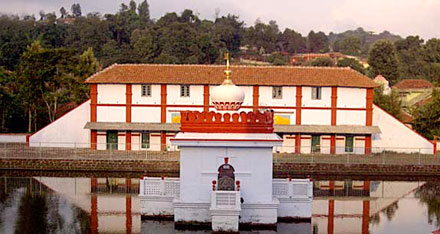
Omkareshwara Temple
Just 1 km from Madikeri town is this beautiful Shiva temple built by the King Lingaraja II in 1820 to appease the spirit of a Brahmin who was killed by the king. The structure is a quaint mix of Islamic and gothic styles of architecture with a dome and four turrets at the corners. The installed “Shivalinga” is specially brought from Kashi.
The main attraction is the holy pond in front of the temple.

Gaddige-Madikeri
The tombs of Raja’s dynasty with high Domes, built in Islamic style and minarets with gold coating built in Indo Sarsenic style. The memorable grave is a tribute the King Virarajendra and his wife Mahadevi Amma. The other two are the graves of Lingarajendra and of Rudrappa, Guru to Virarajendra.
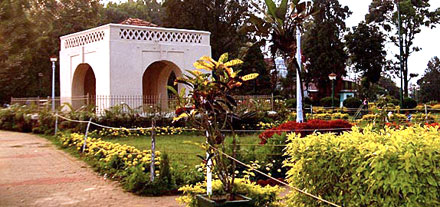
Raja's Seat
This small pavilion at the western end of Madikeri has breathtaking views of the valley through which the road descends to Mangalore. It is an ideal place to explore the exquisiteness of Coorg and was one of the most favorite spots of the Raja’s for enjoying the panoramic beauty of the mist-covered blue hills and valleys with green fields. It is this place where the kings used to relish the sunset and beauty of Coorg. But what's unforgettable about Raja's seat is the spectacular sunset that one can enjoy from here.
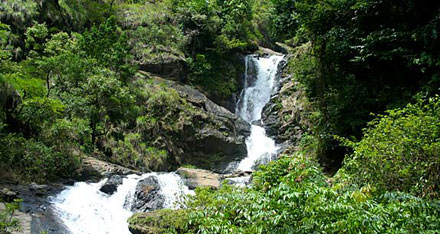
Irruppu Falls
The river Lakshmana Theertha runs down 60 feet from a hill to form this waterfall. This waterfall is situated in Kurchi village of South Coorg. There is also a shiva temple dedicated by Lord Sri Rama on the banks of this river where pilgrims congregate on “Mahashivarathri”. The natural beauty is a treat to the eyes.
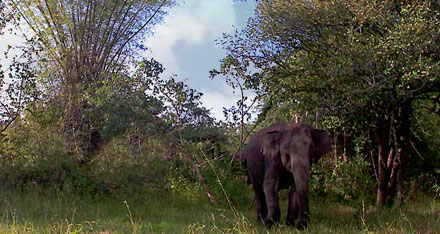
Nagarahole National Park
The Rajiv Gandhi National Park was constituted in 1955. It extends over 650 Sq.Mtrs and is a well-maintained sanctuary. A large quantity of teak wood, rose wood and sandal wood is extensively grown here. It povides an excellent opportunity to watch wild animals like elephants, tigers, deer, bison, and peacocks in the vehicle safari.
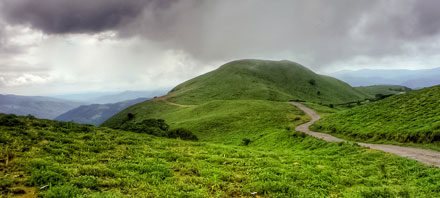
Mandalpatti
Located 22km from Madikeri town is Mandalpatti a beautiful chain of green mountain range, covered with vast open grasslands and valleys. The route is adventurous, with steep curves and zigzag tracks, and Abbey Falls lies along the way. The beauty of Mandalpatti is unwrapped only when you are on the top of the hills. This place is also called as "Mugilupete". Ideal time to visit this place is early mornings or in the evenings.

Sri Paadi Igguthappa Temple & Nalknad Palace - Napoklu
A two-storeyed Palace built by King Dodda Veera Rajendra in 1792 at the feet of the highest peak of Kodagu “The Thadiyandamol”. This peak is an irresistible challenge to trekkers. Paadi Igguthappa temple is a deviation from Kakkabe on the way to this palace. This temple was built by King Lingarajendra during 1810. To visit "Paadi Igguthappa" temple one needs to take a deviation on the way to Nalknad Palace from Kakkabe village.
Chelavara Falls - Virajpet
A mesmerizing waterfall, this is close to a little village called "Cheyandane". This too is a perfect picnic spot for nature lovers. The river here flows through a tree-covered valley, splitting and merging and splitting again around the greenery. There are towering trees and boulder-strewn out crops which are covered only when the river is in spate during the monsoon.


